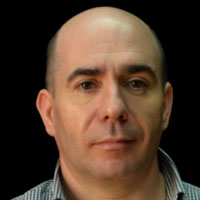Raul Manuel Pereira Morais dos Santos

University of Trás-os-Montes and Alto Douro, INESC-TEC Pole, Engineering Department, Science And Technology School. Quinta de Prados, 5001-801 Vila Real, Portugal ([email protected])
Raul Manuel Morais Pereira dos Santos graduated in Electrical Engineering (branch of Electronics, Instrumentation and Computer Science) at the University of Trás-Os-Montes e Alto Douro (UTAD), Portugal, in 1993. He obtained his Master’s degree in Industrial Electronics from the University of Minho in 1998 and a PhD degree in Electrical and Computer Engineering (specialty microelectronics) obtained from UTAD in 2004. His aggregation in Electrical and Computer Engineering was obtained in UTAD in 2009. He is currently a Tenured Associate Professor at the Engineering Department of the School of Science and Technology of UTAD. His main areas of interest include sensors and sensor interfaces in CMOS microelectronics, energy harvesting techniques to power small and unattended electronic devices, wireless sensor networks, Internet of Things in the context of agriculture/precision viticulture. He is currently an integrated member of the Institute of Integrated Systems and Computer Engineering of Porto (INESC-TEC) in the CRIIS Research Unit.
Communication Abstract
Title: Electronic and computer technologies in precision viticulture
Abstract: Precision viticulture, part of a global concept of precision agriculture, is becoming a trend or a management concept of wine-growing practices aimed at obtaining a product with higher quality, more sustainable and with less environmental impact. It is increasingly necessary to take decisions supported by real time data, to correlate heterogeneous data from distinct sources, to employ predictive models of development/maturation as well as diseases so that the productive process is as efficient as possible. This means that current needs incorporate the need to detect diseases and pests as early as possible so that the ecological and economic impact of phytopharmaceutical treatments is minimized, that irrigation is efficient since natural resources are limited and that strategy of acting on a culture is carried out using variable-rate technologies acting only and when necessary (cultural operations on the vine, for example).
Since the 80’s, much has been done to promote a concept of harvest management where only the process that is monitored can be managed, which is why there has been a significant increase in the number of research works that report the use of the most varied monitoring technologies that are used to infer about the state of any crop, where vineyard is included. From static temperature and relative humidity sensors to the use of unmanned aerial vehicles that carry sophisticated optical image capture sensors over various wavelengths, all techniques have their advantages and disadvantages, each having its own role. However, for budget reasons, interoperability, ease of operation, training, among other aspects, the most varied monitoring solutions do not stand for adequate decision strategies. A possible origin for this difficulty is the extreme complexity in relating the large volume of data that comes from monitoring, in its varied aspects, with the most correct management decision.
One of the greatest innovations that has occurred in the last decade regarding monitoring has been the replacement of complex and wired systems by sensor networks supported by efficient energy management techniques so that simple systems based on low cost microcontrollers can be freely widespread on the field. With wireless and standardized communications (IEEE 802.15.4, IEEE 802.11, IEEE 802.15.1, etc.), this type of systems have dominated the spectrum of publications in this field, presenting themselves as easy-to-use solutions and enhancers for data collection with a granularity compatible with such a desired coverage of spatial and temporal variability. From solutions that directly transmit sensor data to remote locations, whether using base stations on the terrain, now there is a large volume of data available for further analysis and decision making.
With technological solutions that are increasingly economical in terms of embedded devices, the use of imagery has complemented the range of situations to assess the state of the vineyard and provide a higher quality and detail of the monitoring process. The appearance of image with other processing needs as well as the ease in the use of geographic information systems delivered to the last users of this chain of monitoring the crops maps by which they can assess the conditions of culture and make forecasts of harvest. However, even though the correlation of all types of data still depends on many factors, some extremely complex to relate and even process and aggregate in a single integration system, it is still not complete and presents a vast set of difficulties to researchers who work in this area of application of technology to support precision viticulture.
The recent concepts of Internet of Things, Big Data and Analytics are being applied in the most varied contexts, where agriculture/precision viticulture is a part of. However, only a very small percentage is related to this crucial economic area. It is therefore necessary to promote the use of IoT in PA in a complementary perspective to the existing one and to promote solutions within the reach of everyone.
This presentation thus reviews some technologies in the field of electronics and computers that have been helping and making viticulture a more efficient practice and able to be managed in a more sustainable way, at lower costs and with a higher average level of grape quality.


 Português
Português